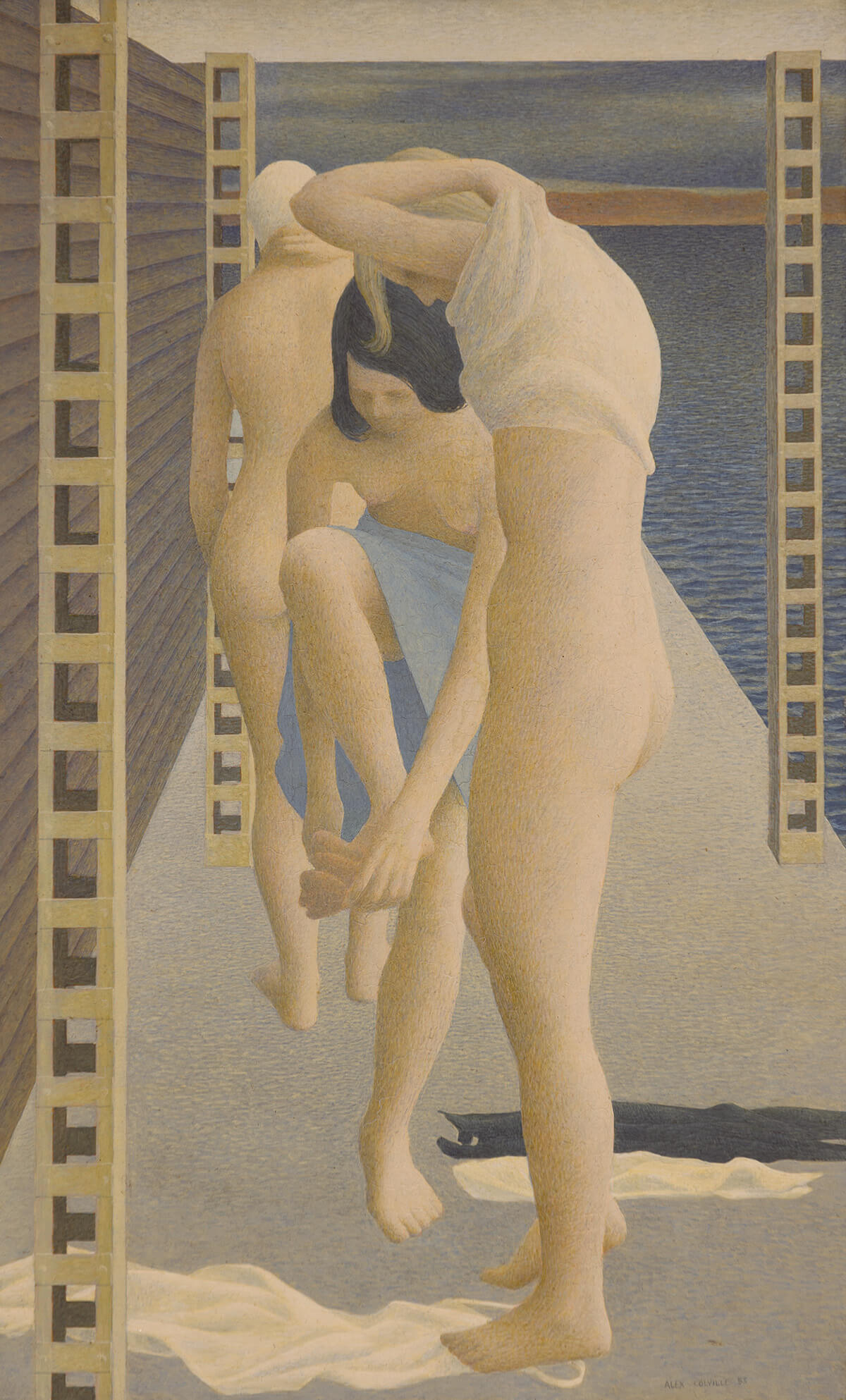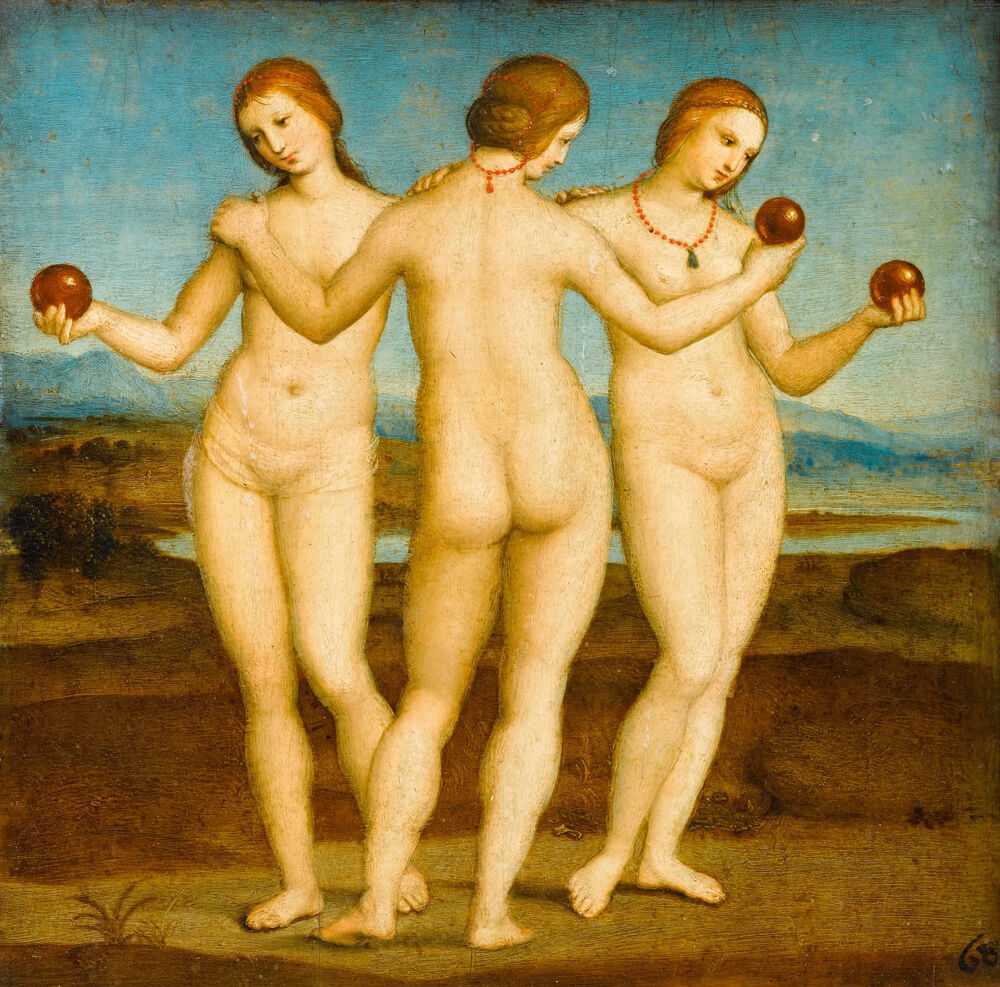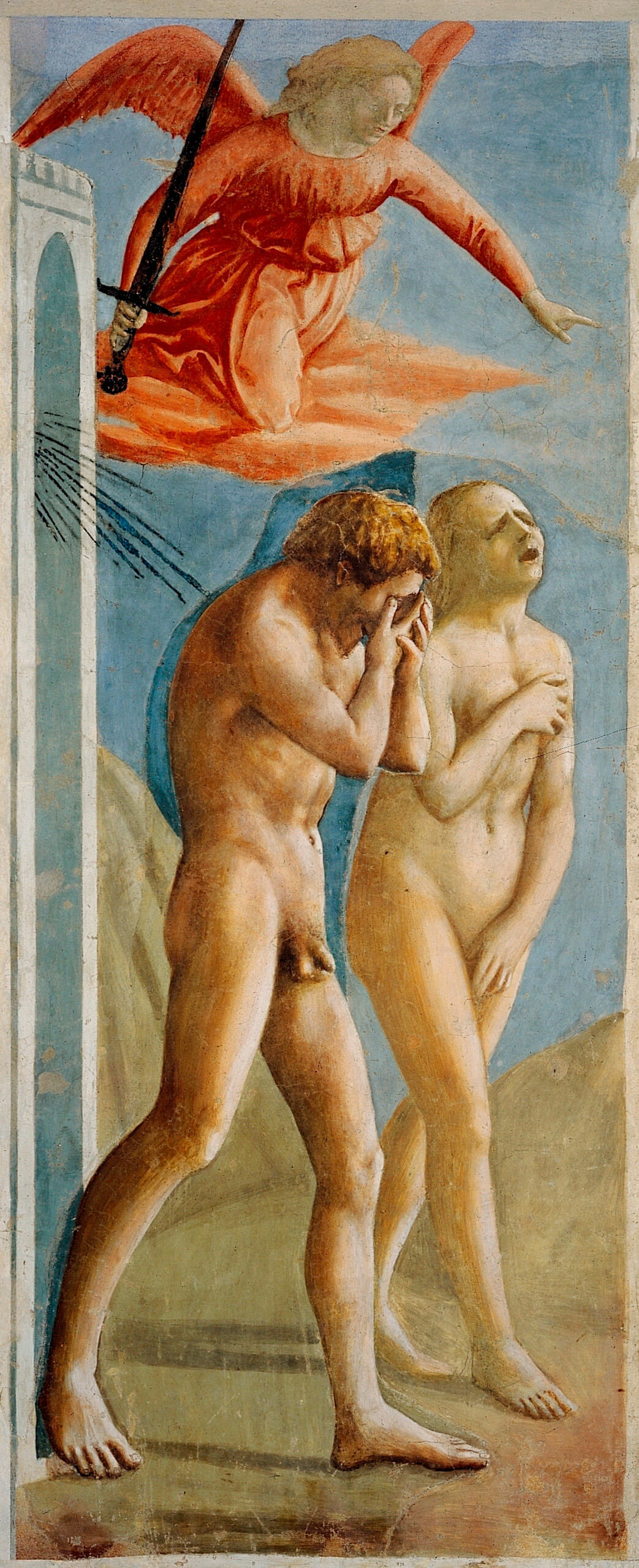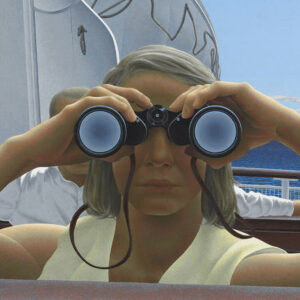Three Girls on a Wharf 1953

Alex Colville, Three Girls on a Wharf, 1953
Glazed casein tempera on Masonite, 41.1 x 25.4 cm
Art Gallery of Nova Scotia, Halifax
Three Girls on a Wharf points to where Colville’s work ultimately evolves, toward subjects grounded in recognizable locations from his life, but imbued with a sense of history and import that belie their seemingly humble origins. This is a departure from other early works such as Four Figures on Wharf, 1952, Coastal Figure, 1951, or Nudes on Shore, 1950, that show figures inspired by Henry Moore (1898–1986) in featureless landscapes with overtly Surrealist overtones.
Here, three figures are displayed in a shallow rectangular box, enclosed on all sides by the wharf structure. The strict geometry creates a feeling of intense focus despite the slice of sky and horizon visible in the top right-hand corner of the painting. This work, which ostensibly shows three young women undressing to go swimming, has a feeling of an impromptu skinny dip, at least until one notices that the figure deepest in the composition is wearing a bathing cap. It is a planned swim, then, and a planned forgoing of swimsuits. These young women are portrayed as they remove their clothes, each one more advanced in her disrobing. Our vantage is from farther down the wharf, as if we were one of the group, standing and observing this scene that has unmistakable overtones of a ritual. There is nothing prurient here; rather, it is as if we have been privileged with a glimpse into the private lives of these girls. Yet their simple swim is freighted with symbolic import.


Three Girls on a Wharf shows Colville’s debt to Renaissance painters. The artist has often been quoted saying he spent years processing what he had seen in a few days’ visit to the Louvre at the end of his service in the Second World War. The influences of Masaccio (1401–1428) and Paolo Uccello (1397–1475) are particularly clear in this exquisite panel. “Colville’s work is filled with visual and verbal allusions that affirm the value of past art and continuity with his own,” notes critic Jeffrey Meyers. “Three Girls on a Wharf echoes the iconography of the Three Graces and the Judgement of Paris.”
Colville’s composition adopts a conventional depiction of the Three Graces (Aglaia, representing elegance and splendour; Thalia, representing youth, beauty, and cheerfulness; and Euphrosyne, representing mirth and joyfulness). This subject was popular throughout the history of Western painting, as it permitted the painter to present the nude female form in the round—showing the nude figure from the front, the rear, and the side. This sculptural effect was used to overcome, at least partially, the single viewpoint mandated by the nature of a flat representation in two dimensions. The Three Graces, with their accompanying attributions, reflect the beauty and promise of youth—as do the girls caught in their preparations for their swim.

 About the Author
About the Author
 More Online Art Books
More Online Art Books
 Acknowledgements
Acknowledgements